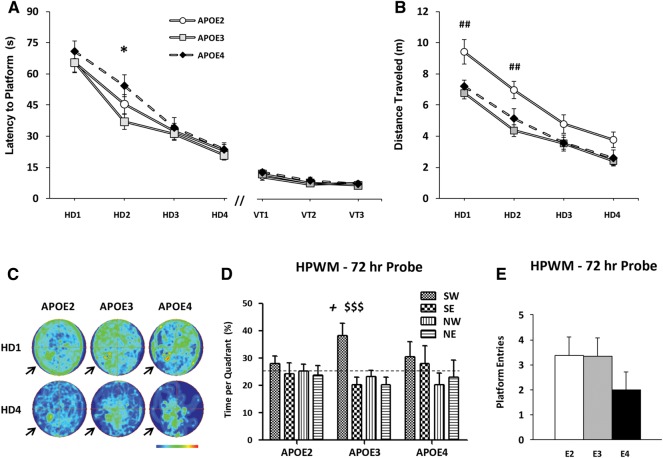Figure 4.
Young APOE4 TR mice exhibit impaired spatial memory, but not learning, in the HPWM. A naive cohort of 3-mo-old APOE TR mice (E2, n = 11; E3, n = 12; E4, n = 9) were tested in the HPWM. (A) Time in seconds (latency to platform) to reach the hidden platform was measured over four TDs (HD 1–4). Behavioral performance in the hidden platform phase and during visible platform trials (VT) of the HPWM was not affected by APOE genotype. (B) Distance traveled during these sessions was also measured. E2 mice swam farther than E3 mice on the first 2 d of training, but performed similarly to E3 mice on subsequent days. (C) Occupancy plots comparing activity patterns on HD1 and HD4 in our TR mice illustrate improved performance over training, as well as a hyperactive phenotype in our E2 mice. Arrows indicate target quadrant. (D) During the probe trial 72 h after training, no difference in percent time spent in the target quadrant was detected between APOE groups. Within-group analyses show that E3 mice alone spent more time in the target quadrant than chance. (E) During the probe trial 72 h after TDs, no genotype differences in platform site crossings were found. Two-way ANOVA with repeated measures: (*) P < 0.05, E4 vs. E3; (##) P < 0.01, E2 vs. E3. One-way ANOVA: ($$$) P < 0.001, E3 (% time in target vs. other quadrants). Within-group t-tests: (+) P < 0.05, E3 (% time in target quadrant vs. 25%).

